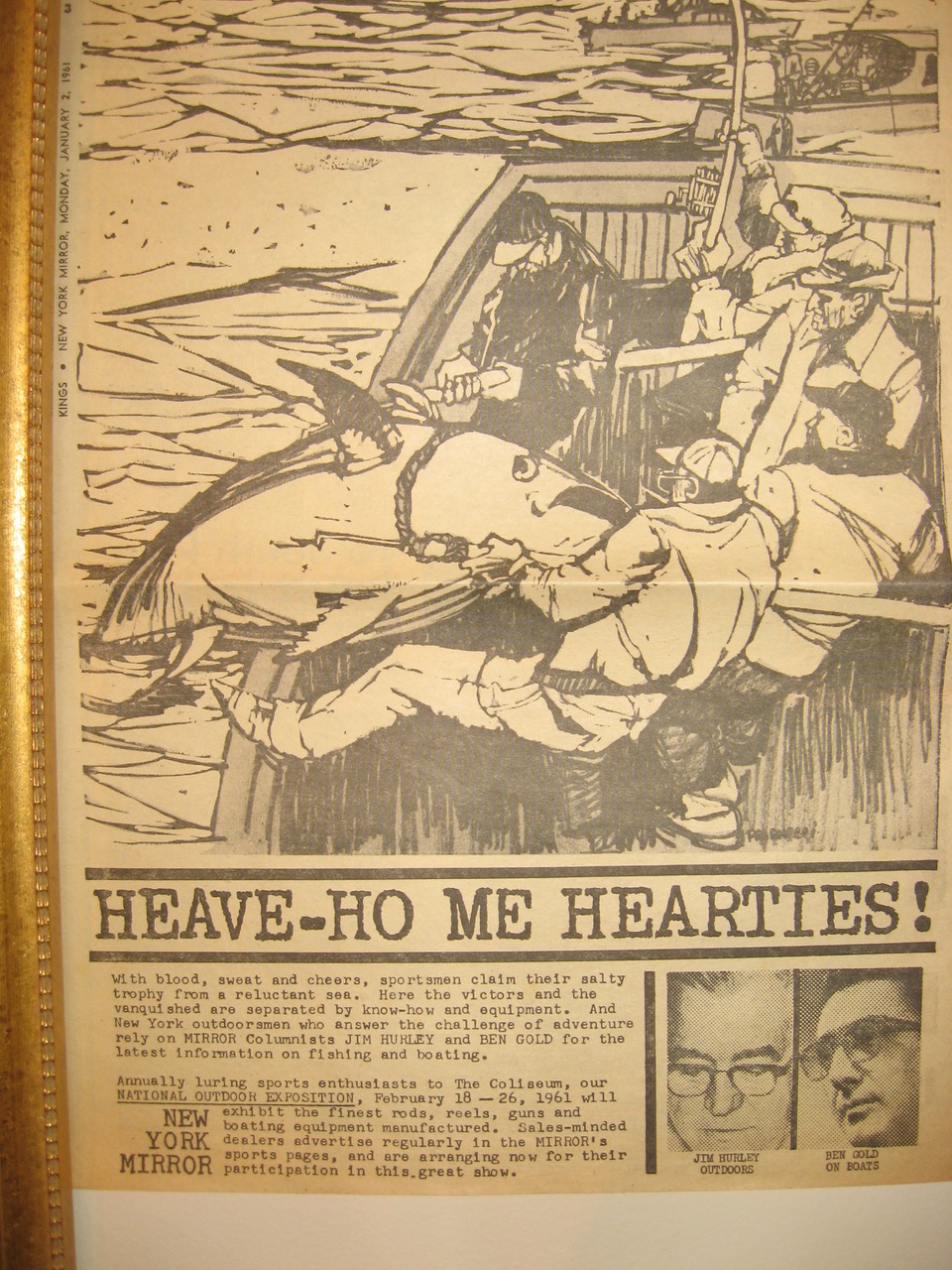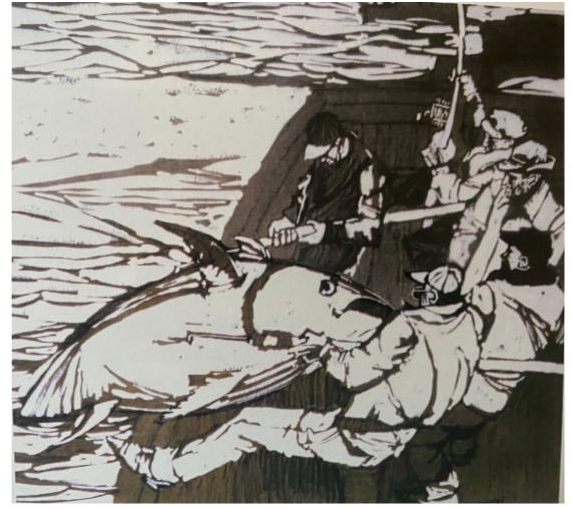“The Fisherman,” ca. 1960
Original artwork by Bob Paganucci, graphic designer
Illustration for the New York Mirror; Ink and poster white on brown chipboard
Bob Paganucci Collection
Montauk Library Archives
Bob Paganucci, who pens poetry and wrote the song Montauk, shows equal artistry in his graphic design.
The founder of Paganucci Design in New York City built a house in Montauk in 1983 that peers over the ocean (he drew the blueprints himself). Like the prow of a ship, this beautiful home leans forward into the sea, taking in spectacular views of wind- as well as wave-and-water surfers. The Paganucci homestead has been the scene of many family get-togethers, and Bob writes lovingly of his wife (Jean, whom he married in 1957) and five children in his memoir My Book. Self-published but filled with anecdotal memories and genealogical information, it entertains while covering all the bases.
This graphic artist has had a career to be proud of: “From the time he was a designer for the New York Mirror, Managing Director at IBM, Design Director at Geigy, Partner at Salpeter Paganucci, Founder and Creative Director of Paganucci Design … his achievements have been inspirational,” writes his youngest son Frank, the current creative director and principal owner of Paganucci Design. His “gift of vision and stamina for perseverance,” underscored his evolution as a master designer.
Today’s TBT, “The Fisherman,” is one of Bob’s illustrations from his days at the New York Mirror. “The image of the fisherman pulling in the tuna was created specifically for a full-page ad in the New York Mirror to promote the launching of a new sports column covering fishing and boating, ” Paganucci writes in My Book.
“Heave-Ho Me Hearties!” the headline calls, referencing “The Fisherman.” “With blood, sweat, and cheer, sportsmen claim their salty trophy from a reluctant sea. Here the victors and the vanquished are separated by know-how and equipment.” Mirror readers would have access to that very same expertise through the journalism of Jim Hurley and Ben Gold.
Paganucci created this piece knowing it would appear in a newspaper. The original artwork, framed and hanging on his living room wall in Montauk, shows extra bright patches of white on gritty brown board. This was done specifically because the piece had to show up correctly in print. The fact that it transferred so beautifully reveals how implicitly Paganucci understood his medium. He employed chipboard (a dense cardboard) and poster white (a paint type often used in artwork destined for reproduction in a magazine or newspaper) to flawlessly convey the final image in black and white. In fact, the newspaper version is slightly larger, with a more expansive background. The original artwork for this newspaper story may have been cut down later, during framing.
“The Fisherman” appeared in 1961, during the peak of sportfishing in Montauk. The New York Mirror had an important relationship with Montauk businesses, particular those in real estate. Also at its peak was advertising. Some of the biggest ad campaigns took place during this era, and Montauk flourished because of its relationship with the Mirror’smarketing division.
Bob Paganucci was right in the heart of it. But his heart was centered in Montauk.



Reply or Comment